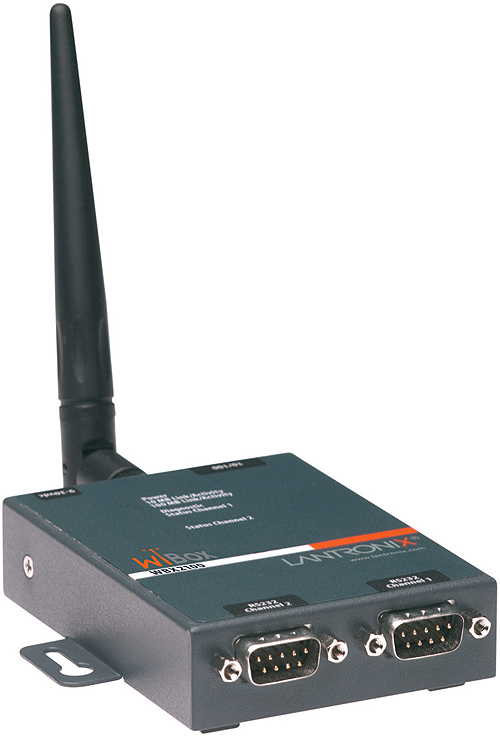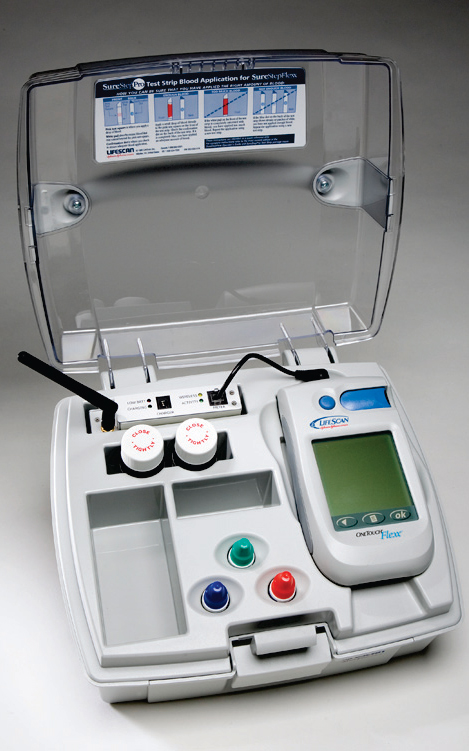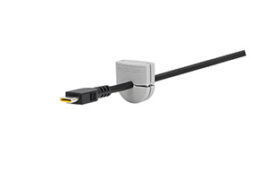Tight glycemic control protocols require frequent blood glucose monitoring and timely data transfer for informed clinical decisions. While the 802.11 wireless standard is best suited for this application, the power consumption demands posed a design and workflow challenge.
Life Scan, a leading proponent of tight glycemic control, manufactures blood glucose monitoring systems for home and hospital use. Its line of Integrated IntelligenceSM tools and processes strives to improve and refine the process of capturing, transforming and applying information to enhance clinical decisions. Its TGC™ Program has helped hundreds of hospitals adopt and implement these lifesaving protocols within their institutions.
Tight glycemic control is the practice of maintaining patients’ blood glucose levels within a very narrow range (generally 80–120 mg/dL), which has been shown to reduce mortality and morbidity among critically ill patients.

However, this control level presents a logistical challenge because of the frequency at which blood glucose testing must be performed. Expecting nurses to test and download data from multiple patients 11 or 12 times a day places a tremendous burden on the staff. Data transfer delays can slow reaction to quality control problems or result in delayed charting and cost capture. To improve operational efficiencies, healthcare institutions are requiring information faster, if not in real time.
To address these issues, LifeScan considered the need for operators to download data instantly to a central database from various locations, so it could be accessed and transformed into actionable knowledge. LifeScan looked for a solution that would allow them to add this function into its OneTouch® DataLink® Data Management System quickly and easily. Their ideal solution would be a small, wireless, scalable device that could integrate into their existing product suite and connectivity products.
LifeScan turned to Lantronix. Based on its WiBox wireless device server, Lantronix engineers developed a small, battery-operated unit to meet the mobility needs. This unit provided the necessary security and flexibility to wirelessly network LifeScan’s devices for real-time data reporting and result transfer. After performing a blood glucose test, the unit wirelessly transmits the results from its point-of-service meters, then powers down to save battery life. This feature is especially important because of the need to perform many tests in a single day combined with the large power draw required by the 802.11 wireless standard. LifeScan named the new product the OneTouch® DataLink® Wireless Unit. This unit also eliminates the cost and time involved in creating secure wired network links between devices.

The OneTouch® Flexx™ Meter and OneTouch® DataLink® offer additional flexibility to customize glucose testing for individual locations. In the case of tight glycemic control, a network at the point of care can make it more efficient to manage protocols. These units are backward compatible and work with hospitals’ existing glucose meters. The mobility of the technology also allows institutions to purchase only the systems they need, helping streamline costs. The reliable OneTouch® Flexx™ Meter also reduces the risk of lost data. And because of its benefits, it has shown increased adoption among physicians and staff.
The first healthcare provider to implement the OneTouch® DataLink® Data Management System in its five acute care hospitals in New England will be Lifespan.
Lantronix
www.lantronix.com
::Design World::
Filed Under: CONNECTIVITY • fieldbuses • networks, Wireless • 5G and more, Medical-device manufacture, Wireless devices





Tell Us What You Think!